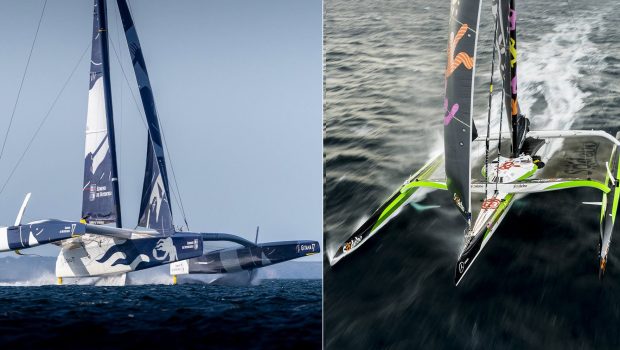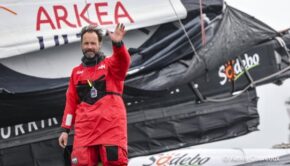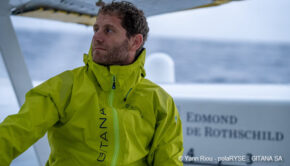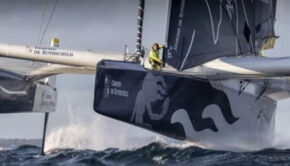Standing by for Jules Verne Trophy
Published on November 17th, 2020
The rules for the Jules Verne Trophy are simple – it is for the fastest time around the world by any type of yacht with no restrictions on the size of the crew, starting and finishing from the exact line between the Le Créac’h Lighthouse off the tip of Brittany and the Lizard Point in Cornwall.
It is a non-stop around-the-world course without outside assistance via the three Capes (Good Hope, Leeuwin and Horn), which was first established in 1993, with all nine winners as either catamarans or trimarans.
The current challenge is to beat the record time of 40 days 23 hours 30 minutes and 30 seconds set by Francis Joyon and crew on the 31.5m IDEC Sport in 2017. Because of wind patterns and the inhospitable winter climate in the southern latitudes, now is the time to challenge Joyon’s record, and two teams are waiting to do that.
Led by co-skippers Franck Cammas and Charles Caudrelier, their crew on the 32-metre Maxi Edmond de Rothschild trimaran are on standby. Launched in July 2017, and going by the name Gitana 17, she had been devised, developed, and built with the focus on solo sailing, but she is believed to be adept for major record attempts in crewed configuration.
Also on standby is skipper Thomas Coville and his crew on the 32-metre Sodebo Ultim 3, launched in March 2019 and is the last born of the Ultim, the result of two years of design and construction orchestrated within the team. The Jules Verne Trophy will be his first world tour.
With weather forecasting only reliable up to five days, this is also the target time to the equator, and any weather window that doesn’t achieve that pace will not be seen as promising. Expect these teams, both based in Lorient (France), to remain patient for now, but that can change as they get closer to the go/no-go time of early February 2021.
Record Facts
• Start and finish: a line between Créac’h lighthouse (Isle of Ushant) and Lizard Point (England)
• Course: non-stop around-the-world tour racing without outside assistance via the three Capes (Good Hope, Leeuwin and Horn)
• Minimum distance: 21,600 nautical miles (40,000 kilometres)
• Ratification: World Sailing Speed Record Council, www.sailspeedrecords.com
• Time to beat: 40 days, 23 hours, 30 minutes and 30 seconds
• Average speed: 21.96 knots
• Date of current record: January 2017
• Holder: IDEC SPORT, Francis Joyon and a 5-man crew
Split Time References – Full Crew:
Ushant-Equator: 4d 20h 07 ‘(Spindrift 2 in 2019)
Equator-Cape Aiguilles: 6d 08h 55 ‘(Banque Populaire V in 2012)
Cape Aiguilles-Cape Leeuwin: 4d 09h 32 ‘(IDEC Sport in 2017)
Cape Leuuwin-Cape Horn: 9d 08h 46 ‘(IDEC Sport in 2017)
Cape Horn-Equator: 7d 04h 27 ‘(Banque Populaire V in 2012)
Equator-Ushant: 5d 19h 21 ‘(IDEC Sport in 2017)
Here are the nine that have held the trophy:
2017 – Francis Joyon / IDEC SPORT (31.5m) – 40:23:30:30
2012 – Loïck Peyron / Banque Populaire V (40m) – 45:13:42:53
2010 – Franck Cammas / Groupama 3 (31.5m) – 48:07:44:52
2005 – Bruno Peyron / Orange II (36.8m) – 50:16:20:04
2004 – Olivier De Kersauson / Geronimo (33.8m) – 63:13:59:46
2002 – Bruno Peyron / Orange (32.8m) – 64:08:37:24
1997 – Olivier De Kersauson / Sport-Elec (27.3m) – 71:14:22:08
1994 – Peter Blake, Robin Knox-Johnston / Enza New Zealand (28m) – 74:22:17:22
1993 – Bruno Peyron / Commodore Explorer (28m) – 79:06:15:56









 We’ll keep your information safe.
We’ll keep your information safe.